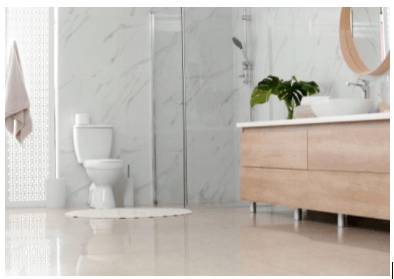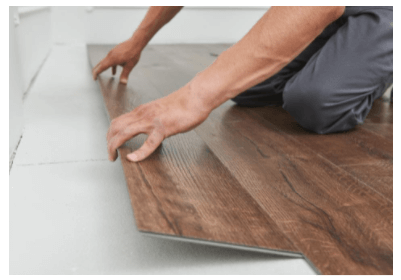The type of flooring you choose can make a significant difference to the décor and function of your home. There are different kinds of flooring, each with its benefits and drawbacks. To determine the best flooring for the rooms in your house, you’ll need to balance cost, appearance, ease of installation, maintenance, long-term durability, and resistance to water and temperature changes.
How to Choose Your Flooring
The best type of flooring for your home depends on several factors, including the décor, your budget, whether you prefer manufactured or natural materials, humidity and moisture levels, and ease of maintenance. In addition, ease of installation plays a significant role in the suitability of a flooring type. If you don’t want to hire an outside contractor, look for flooring that’s easy to install. As part of DIY installation, you’ll need a set of tile tools, which will vary depending on whether you’re installing solid hardwood, linoleum, ceramic, or another material.

Solid Hardwood
For the homeowner who wants the experience of authentic wood under their feet, you can’t beat solid hardwood. While hardwood is a prevalent flooring option, it’s also one of the most expensive due to its cosmetic appeal. Hardwood is available in a wide range of colors and styles to suit any home. Unlike engineered hardwood, you can refinish solid hardwood repeatedly to maintain its appearance, offsetting the consequences of impact or damage. Popular flooring options include wood, engineered flooring materials, vinyl, tile and carpet.
Although it is possible to DIY hardwood flooring, the installation process requires cutting and the use of nails, adhesives, or other fasteners. It’s advisable to enlist the services of a professional for this kind of project. Hardwood is also susceptible to moisture, so avoid installing solid hardwood flooring in your bathroom, kitchen, or basement. You should also be aware that solid hardwood can expand and contract due to temperature extremes, making it critical to monitor the humidity level in your home year-round.
Engineered Wood
Consisting of a solid wood or veneer layer of hardwood and a core of high-density fiberboard, engineered wood offers several advantages over authentic hardwood for home flooring. One of these benefits is cost; engineered wood is generally less expensive than the solid hardwood alternative. Engineered wood is also easier to install.
Several varieties use the click-lock assembly method, where each plank uses a tongue that fits into the corresponding groove of another, fitting together like pieces of a jigsaw puzzle. Using click-lock engineered wood, you can assemble flooring simply and easily with shims. There are, however, varieties of engineered wood that use glue and nails if you’d prefer that method of installation.
Laminate Flooring
Yet another low-cost alternative to solid hardwood, laminate is sometimes used interchangeably with engineered wood. Unlike engineered wood, where the topmost layer is real hardwood, laminate uses a printed image or decorative layer depicting hardwood. The core is composed of compressed medium-density fiberboard. Laminate is easy to install because it’s designed to float. You don’t nail or glue the floor covering to the substrate. It’s also easy to clean; you can mop the laminate’s top layer as needed. The critical thing to remember about laminate flooring is that it’s not natural wood. It won’t have the same feeling, sound, or texture as either solid hardwood or engineered hardwood. If that’s a concern, consider alternatives. However, laminate flooring is less expensive than the alternatives.

Porcelain/Ceramic Tiles
For bathrooms and other spaces where moisture levels are high, consider porcelain or ceramic tiles. There are some essential differences between these materials. Porcelain is more resistant to water and harder than ceramic. While porcelain is available in various colors, ceramic tiles tend to be manufactured in more earthy or natural tones. Porcelain is composed of kaolin as a primary ingredient, along with feldspar and quartz.
If a porcelain manufacturer wants its product to be certified by the Porcelain Tile Certification Agency, proving its authenticity and water resistance, it must submit samples for testing. The porcelain tiles must not absorb more than 0.5% of water. Searching for the PTCA logo can help you determine the quality of the product you intend to buy. As porcelain is all but waterproof, it will protect the subfloor from water damage and inhibit mold growth underneath. It’s also low maintenance, allowing you to mop, sweep, or scrub the tiles as needed. However, the grout requires periodic resealing for maximum protection.
Porcelain tiles are also available with a color that penetrates the body of the tile, whereas ceramic tiles typically are not. This means that if the tile suffers surface damage, you won’t lose color uniformity. While porcelain is more expensive than ceramic, it benefits from increased longevity, so the higher initial investment may be worthwhile. Ceramic tiles are hard, brittle, and heat resistant like porcelain. The primary difference between porcelain and ceramic is water absorption. Ceramic tiles can absorb more than 0.5% of water. High-quality ceramic tiles are comparatively inexpensive and, being less dense than porcelain, can make DIY installation easier. While ceramic tiles don’t offer the same degree of water resistance, glazed ceramic is not porous, providing some protection.
Vinyl and Linoleum Flooring
Although sometimes used interchangeably, vinyl and linoleum are not the same material. Vinyl is polyvinyl chloride (PVC), a synthetic polymer plastic. Linoleum is composed of natural ingredients, such as linseed oil, pine resin, wood, and cork. One of linoleum’s biggest selling features is that it’s all-natural. Linoleum, a biodegradable material, has several benefits. It can prevent the buildup of electrostatic charge, which can be harmful to electronics and cause discomfort. It’s also widely regarded as comfortable underfoot and resilient. With proper care, a linoleum floor should last 30 years or more. A hypoallergenic material, linoleum also has an anti-microbial quality to it, resisting the growth of bacteria.
However, linoleum has its drawbacks too. It’s susceptible to moisture, soft, and prone to scratches; it requires periodic maintenance, such as sealing with wax. In addition, the installation process is not DIY-friendly, requiring you to hire a professional under most circumstances. Vinyl flooring, available in sheets, tiles, or planks, like linoleum, is a more affordable option due to its synthetic composition. Vinyl is durable, simple to install yourself, and available in waterproof varieties that are easy to clean and maintain. Its disadvantages are that the visual layer may wear over time, it has a shorter lifespan than linoleum, and its production is less environmentally friendly.
Making Your Selection
When you’re searching for an appropriate type of flooring for your living room, kitchen, bathroom, or basement, it’s vital to assess each material’s strengths and weaknesses. No flooring type is perfect for every situation, style, environment, or installation method. By researching each flooring type, you can make an informed decision that meets your style and budget.
